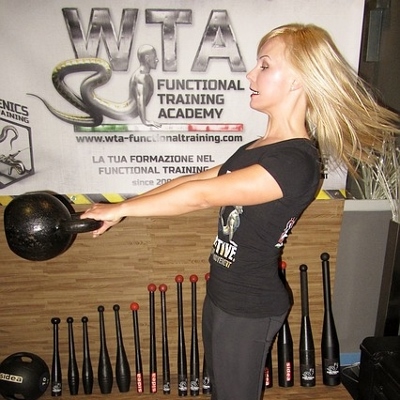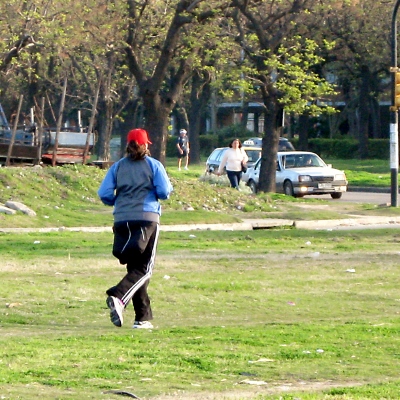 Snacking, almost everyone does it. From chips to soda to cookies, the options for snacking between meals are seemingly endless; however, sometimes we snack for reasons other than being truly hungry. Â Think about it. Do you know what triggers your snack attacks? Answer these five questions to discover what kind of snacker you are. Then learn some smart, simple, snacking strategies to eliminate food cravings.
Snacking, almost everyone does it. From chips to soda to cookies, the options for snacking between meals are seemingly endless; however, sometimes we snack for reasons other than being truly hungry. Â Think about it. Do you know what triggers your snack attacks? Answer these five questions to discover what kind of snacker you are. Then learn some smart, simple, snacking strategies to eliminate food cravings.
1. You are most likely to have the desire to snack…
A. When you are working in front of your computer.
B. Within an hour or two after lunch.
C. Whenever there’s food around you.
2. Your typical go-to snack is…
A. Something sweet (i.e. candy or cookies) or salty (i.e. chips or pretzels.)
B. A cup of coffee or can of soda.
C. Whatever’s available in the break room vending machine or in your cupboards.
3. Even if you’re not really hungry, you’ll snack when…
A. You are worrying about everything that you need to get done.
B. You need a boost in the afternoon to get you through the rest of the day.
C. Your co-worker offers you some candy, chips or crackers.
4. Your cravings for sweets kick into high gear when…
A. Your demands at work/and or home seem overwhelming.
B. It’s past your bedtime, but you have work to get done by the next morning.
C. You know you have goodies available for the taking in your cupboards and/or desk at work.
5. Your desire for â€comfort foods†increases…
A. When you have a disagreement with someone.
B. When you don’t get enough sleep.
C. Every time you see them!
So, what kind of snacker are you?
Mostly A’s = Stress Snacker
When you experience stress, your body releases the stress hormone cortisol, which triggers food cravings especially for sweets. While it’s normal and healthy to experience some degree of stress, too much stress will throw your blood sugar levels out of whack and suppress your immune system thereby leading to weight gain and/or sickness and disease.
Reaching for something sweet is the last thing you want to do to ease your emotions; when you engulf something sweet you continue the cycle of the blood sugar rollercoaster ride and you further suppress your immune system—you’re basically adding more stress to your body.
Instead of using food to deal with your stress, try doing something that relaxes you or makes you feel good. For example, take a few minutes to listen to some uplifting music or read something light and funny. Take a short walk or do some energizing exercises. Click here some some ideas.
If you want to change your mood, you have to change your behavior. But whatever you do, do NOT reach for something to nibble on—you’re only perpetuating the stress cycle!
Mostly B’s = Sleepy Snacker
If you need to rely on sugar snacks and caffeine to keep you alert, your body is telling you something! You may not be getting the rest and relaxation that you need to keep you energized. If you crash after meals, there’s a good chance that you’re not eating frequently enough, and you’re not balancing your meals properly.
Start to combat your sleepy snacker tendencies by getting to bed by 10:00 PM as much as possible. Your body starts the release of growth and repair hormones that help your body recover and wake feeling refreshed.
Going more than four hours between meals slows down your metabolism and causes your body to increase fat storing enzymes. It can also cause a blood sugar/energy crash, which stimulates your appetite for something quick and fast! When you plan to eat healthy snacks about three hours after your meals you can keep your metabolism elevated and avoid the energy lows driving you to reach for a stimulating snack.
Eating too much fat/protein will make you feel sleepy and sluggish, while eating too many carbs will give you an immediate jolt, but will lead to a blood sugar crash which, again, triggers food cravings and feeling tired. To keep your blood sugar levels stable, your energy elevated and your stomach satiated, you need to create the right balance of proteins, fats and carbs. The best way to determine your protein, fat and carbohydrate needs is to determine your Metabolic Type.
Mostly C’s = See-Food Snacker
If you’re a see-food snacker, you are likely to eat whenever you see food and it’s probably hard for you to say “no†when food is offered to you—whether it’s healthy or not!
There’s a great saying that goes: if you want to eliminate a bad habit, simply replace it with a good one! To combat your mindless eating, create an environment for yourself where you won’t feel tempted to eat whatever is in front of you. That may mean bringing your own healthy snack to a meeting or avoiding the break room or other tempting situations.
Personally, I’m an out of sight, out of mind kind of eater. If I don’t see it, then I don’t think about eating it. But when it’s there, the cravings kick in! I used to teach at an elementary school, and the staff room was always filled with sweets—a combination of candy and cookies from the snack bar and left over treats from classroom celebrations (it was always someone’s birthday!) I started avoiding the staff room to avoid these temptations.
At home, I keep healthy snacks on hand, so when I’m hungry, and I reach for something quick to eat I don’t have the option to eat cookies and candy because they’re not there! Check out this post for some satisfying and slimming on-the-go snacks.
Tell me what your favorite healthy, go to snack is by leaving me a comment. I’m always looking for new snack ideas!
To healthy snacking,
Melissa Koerner





